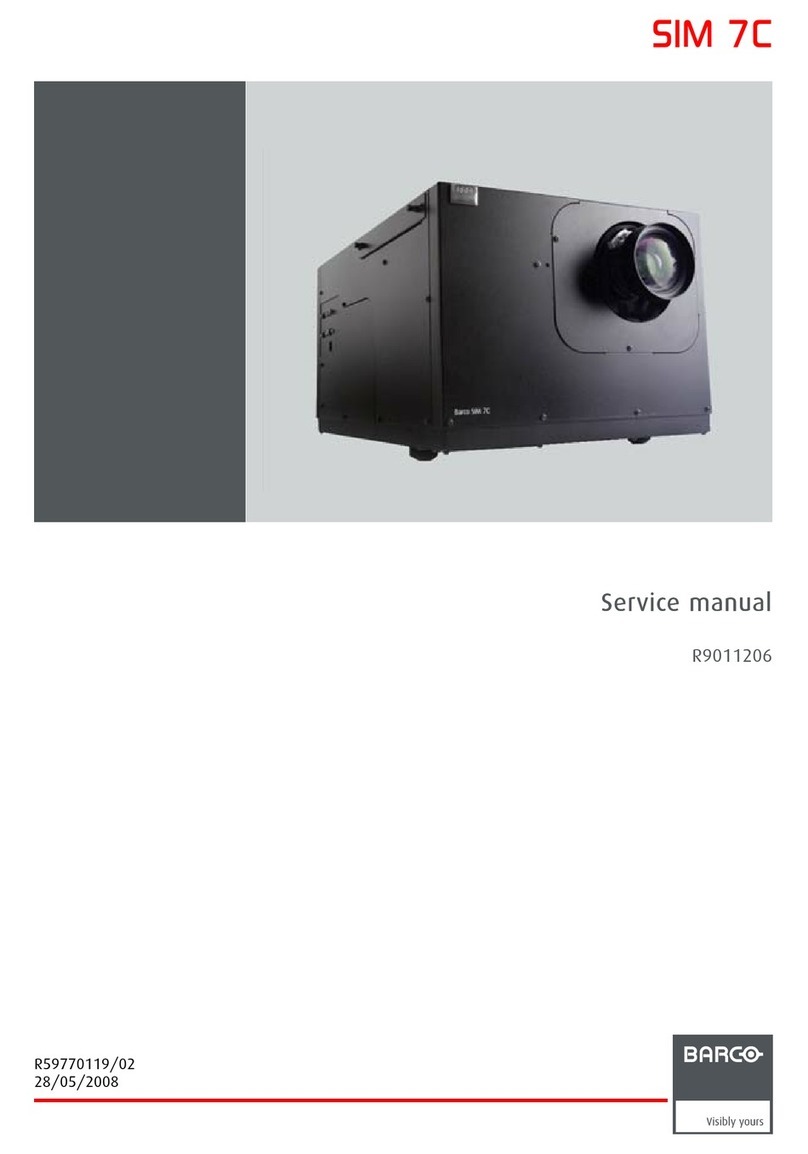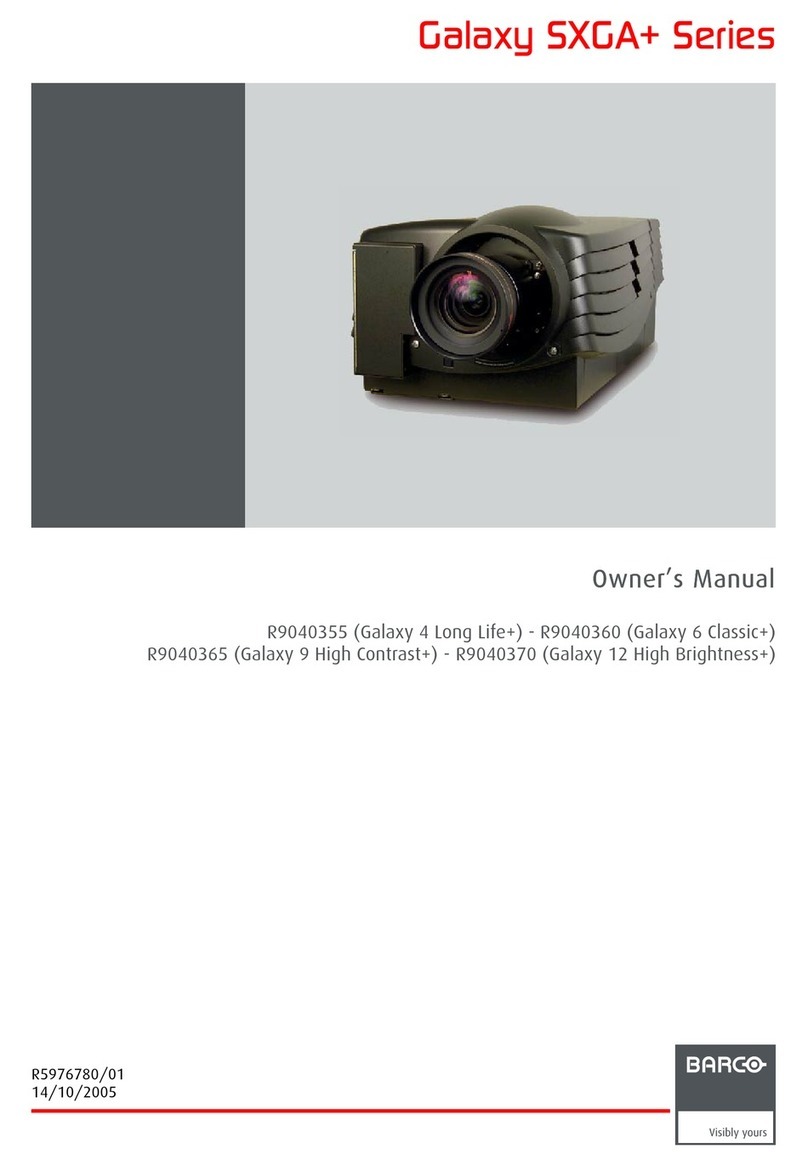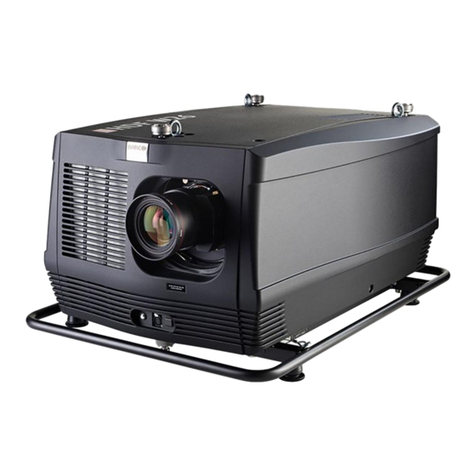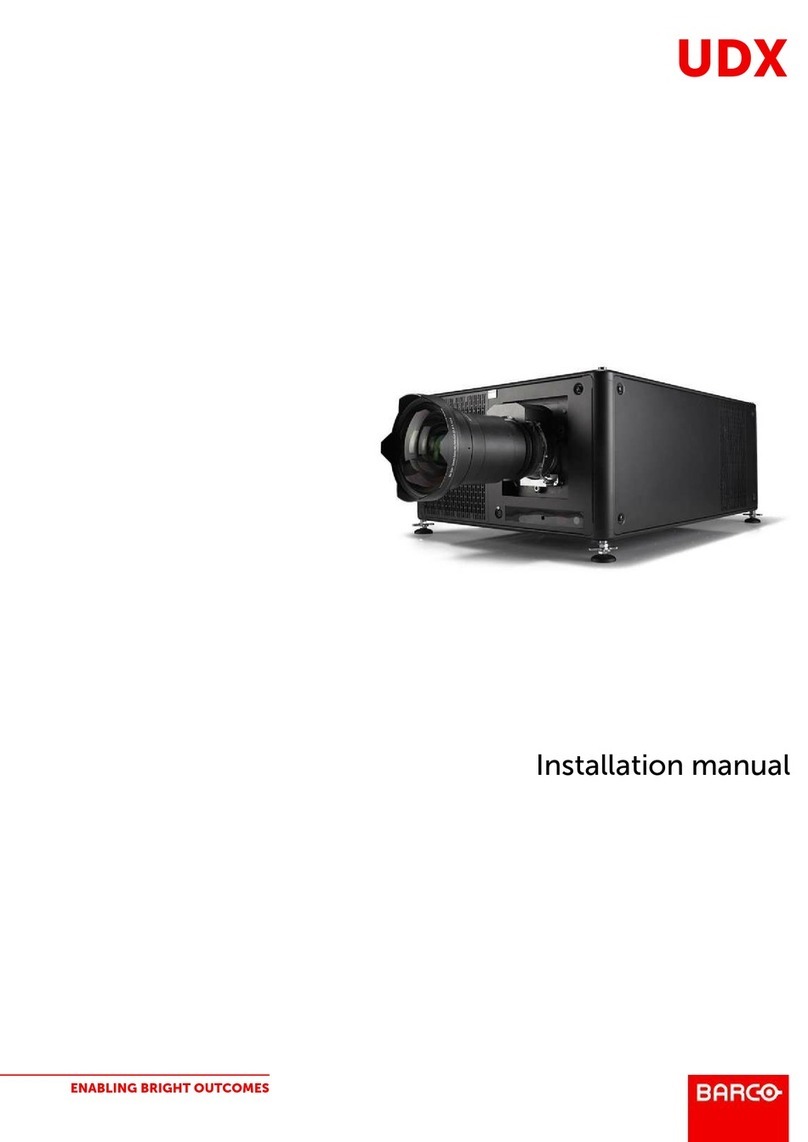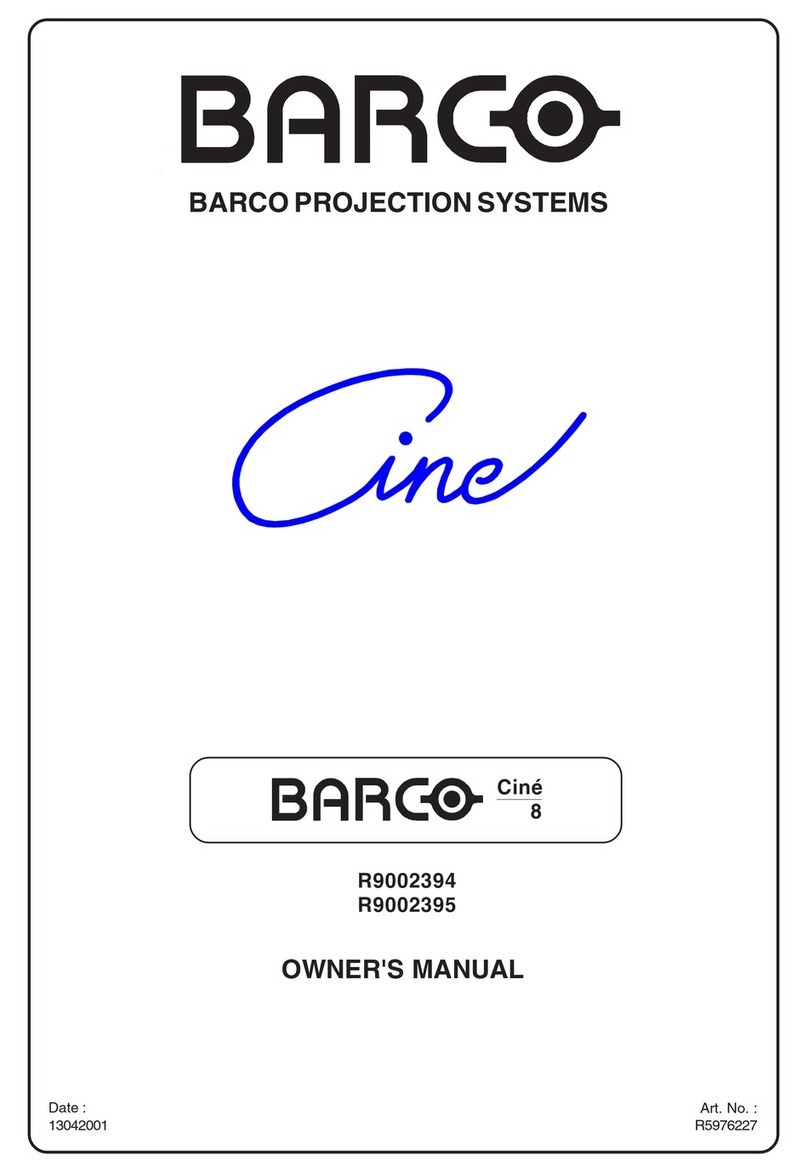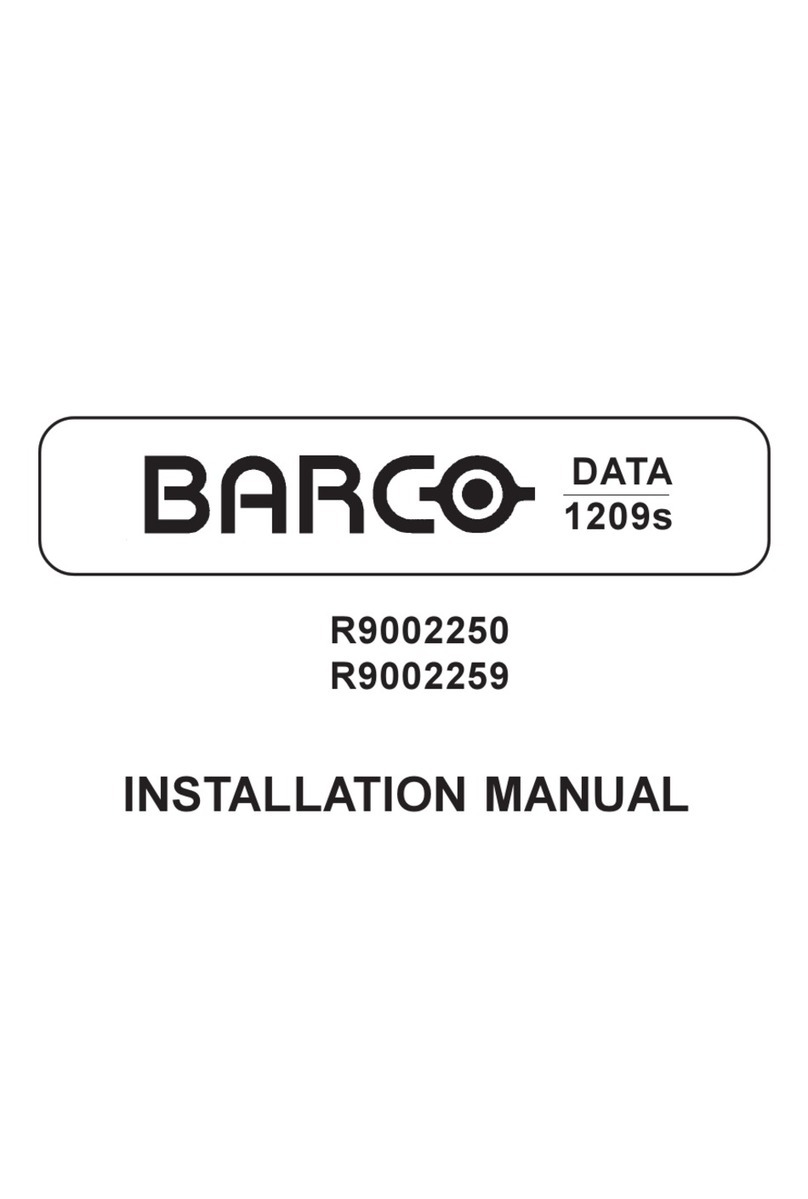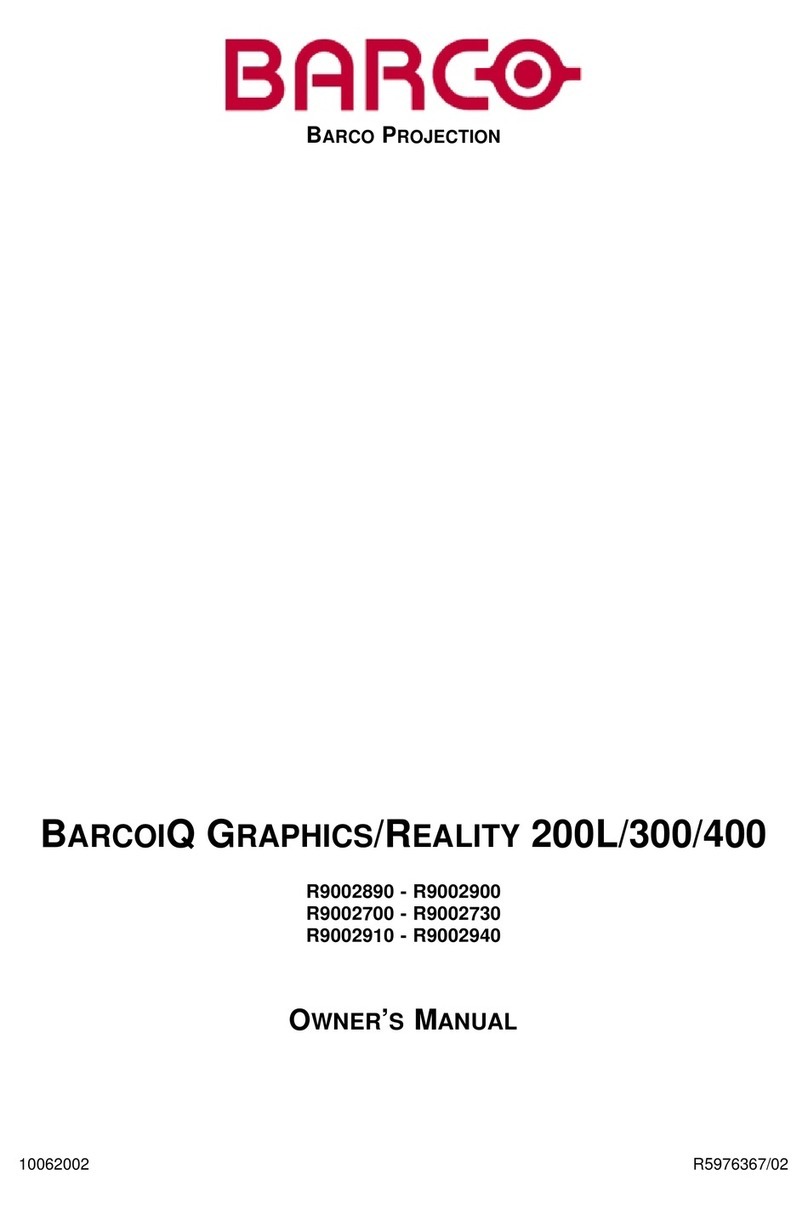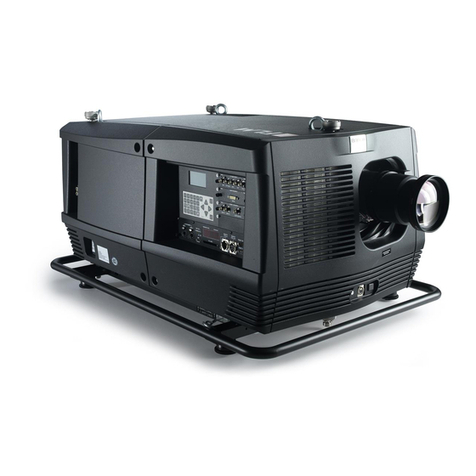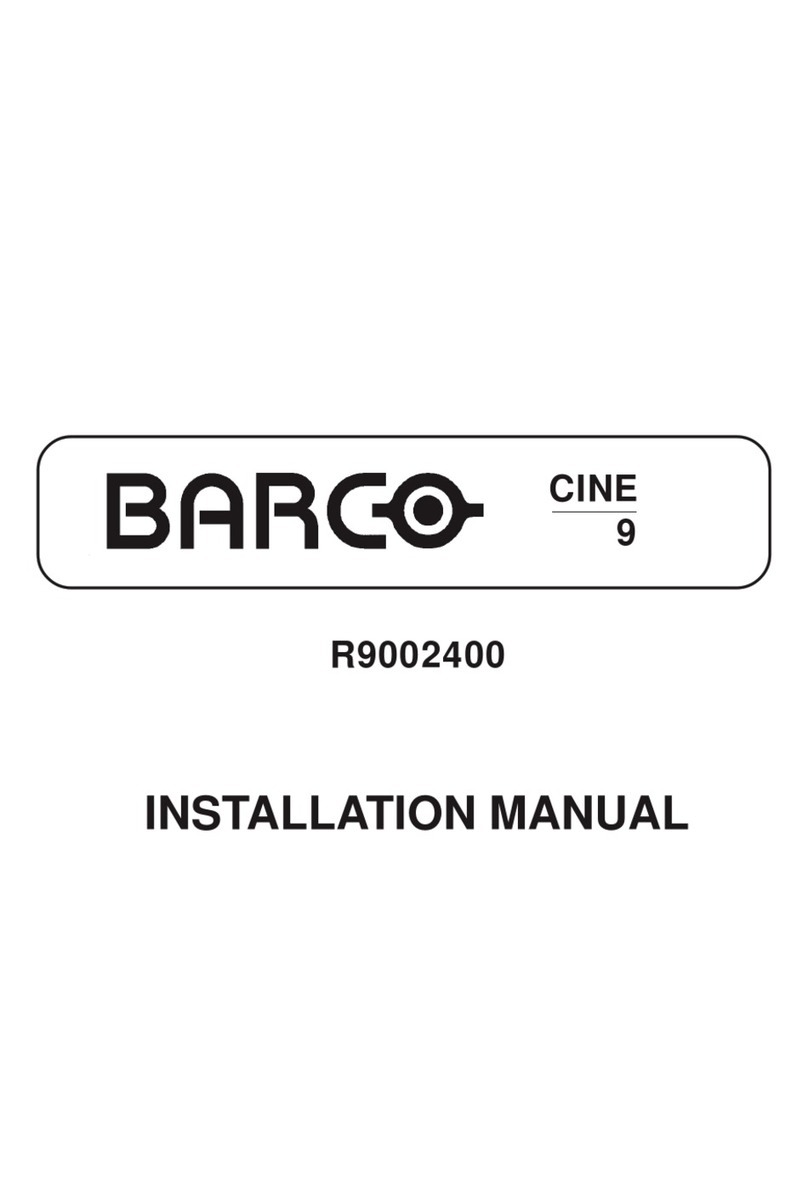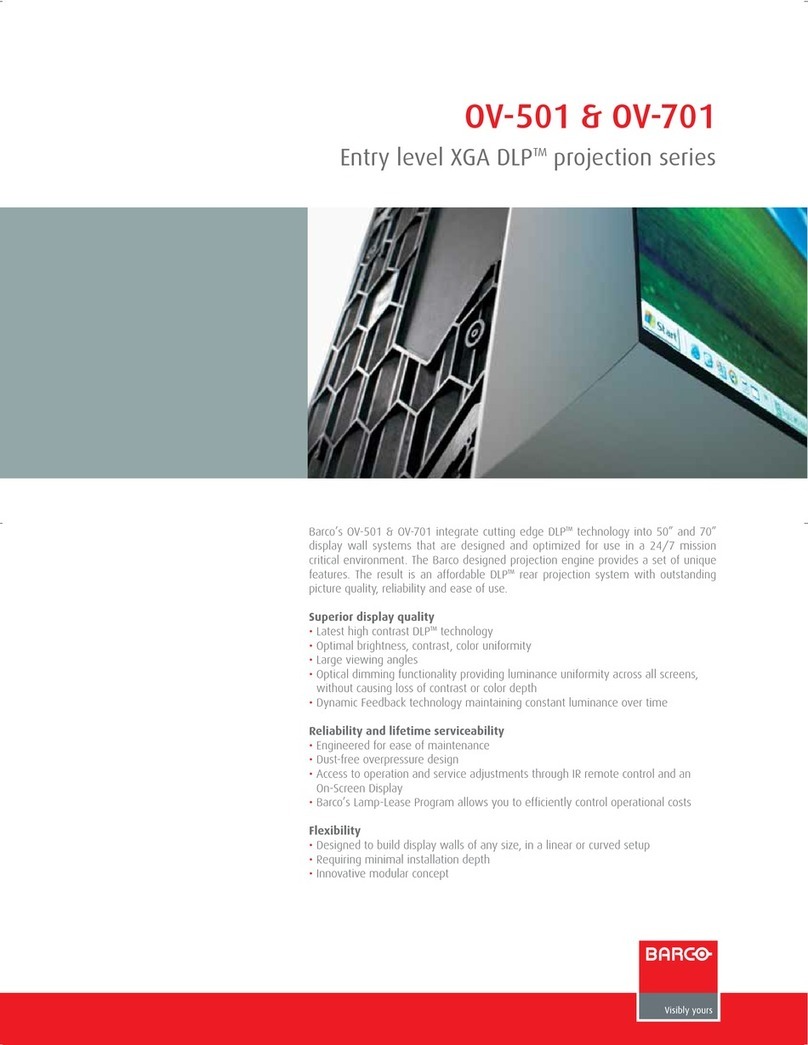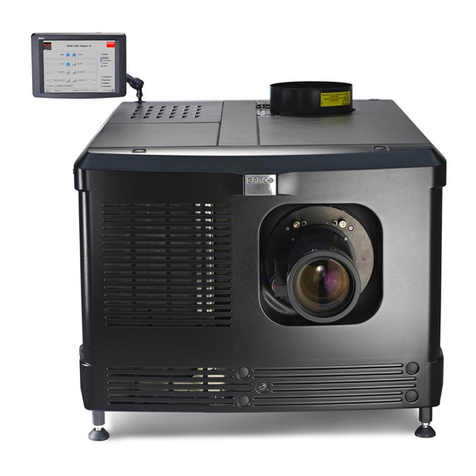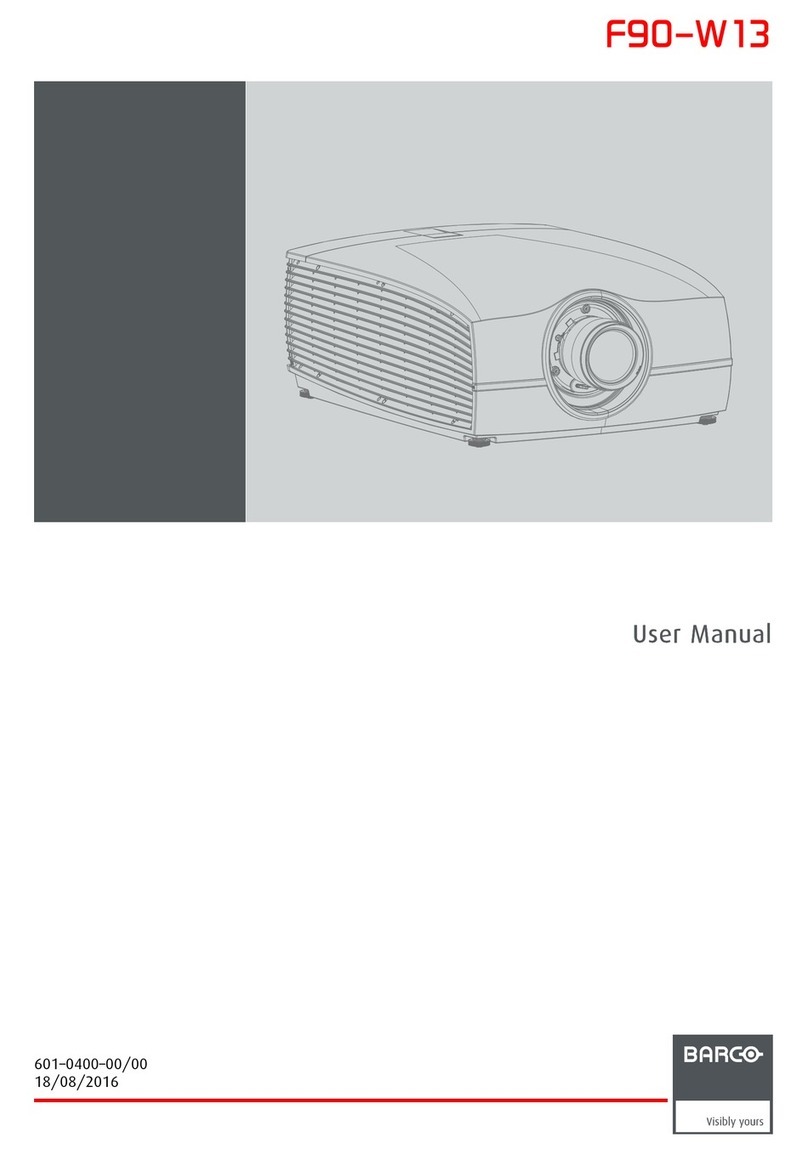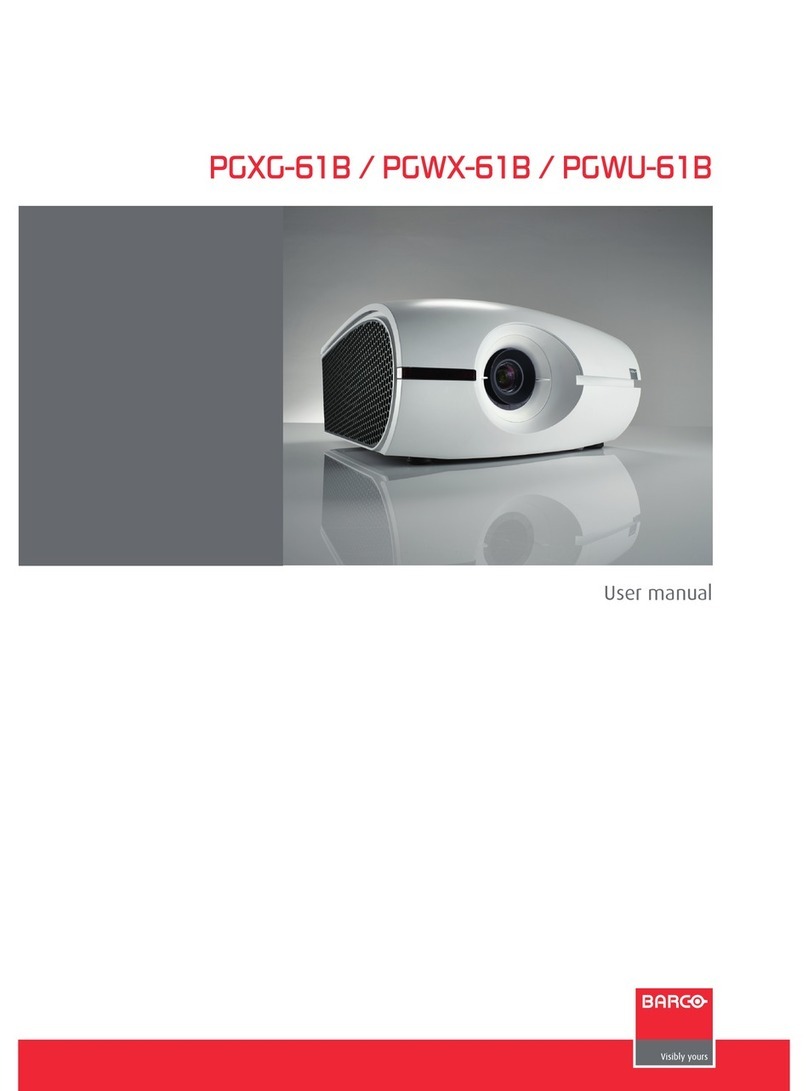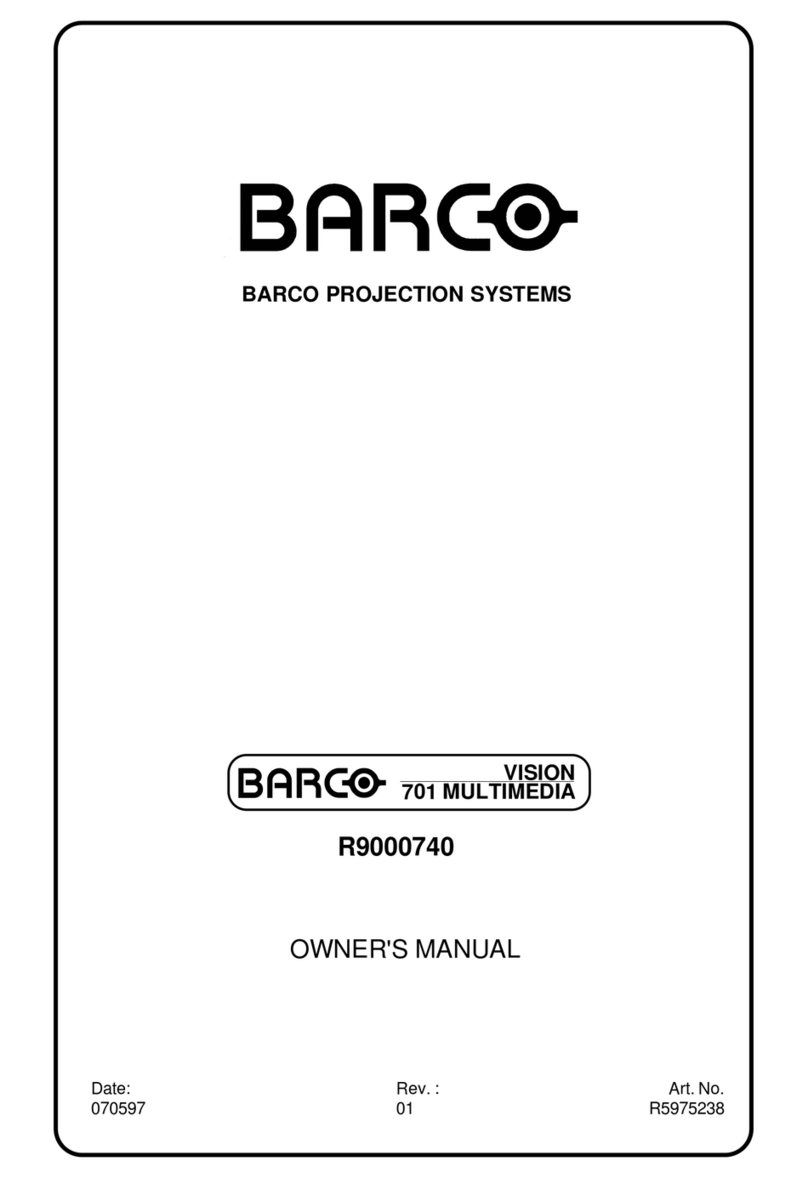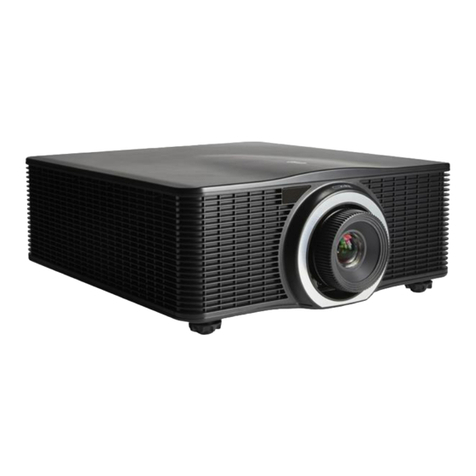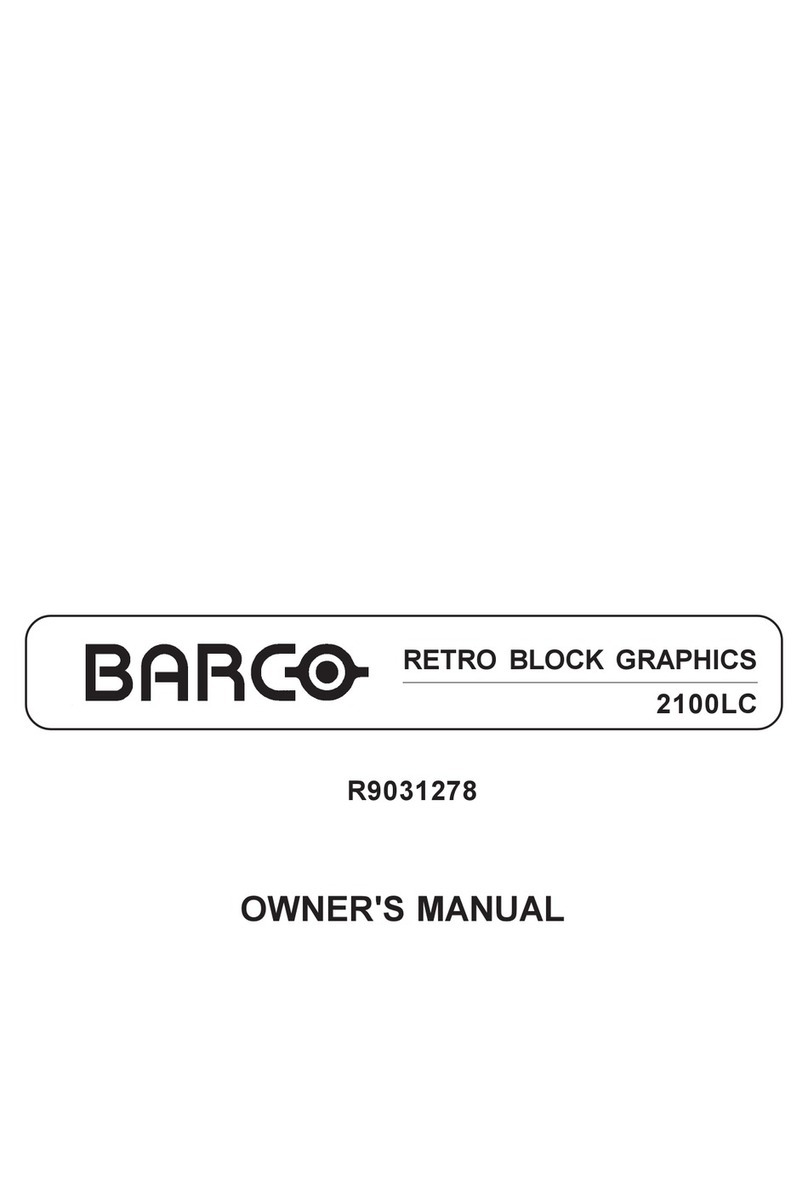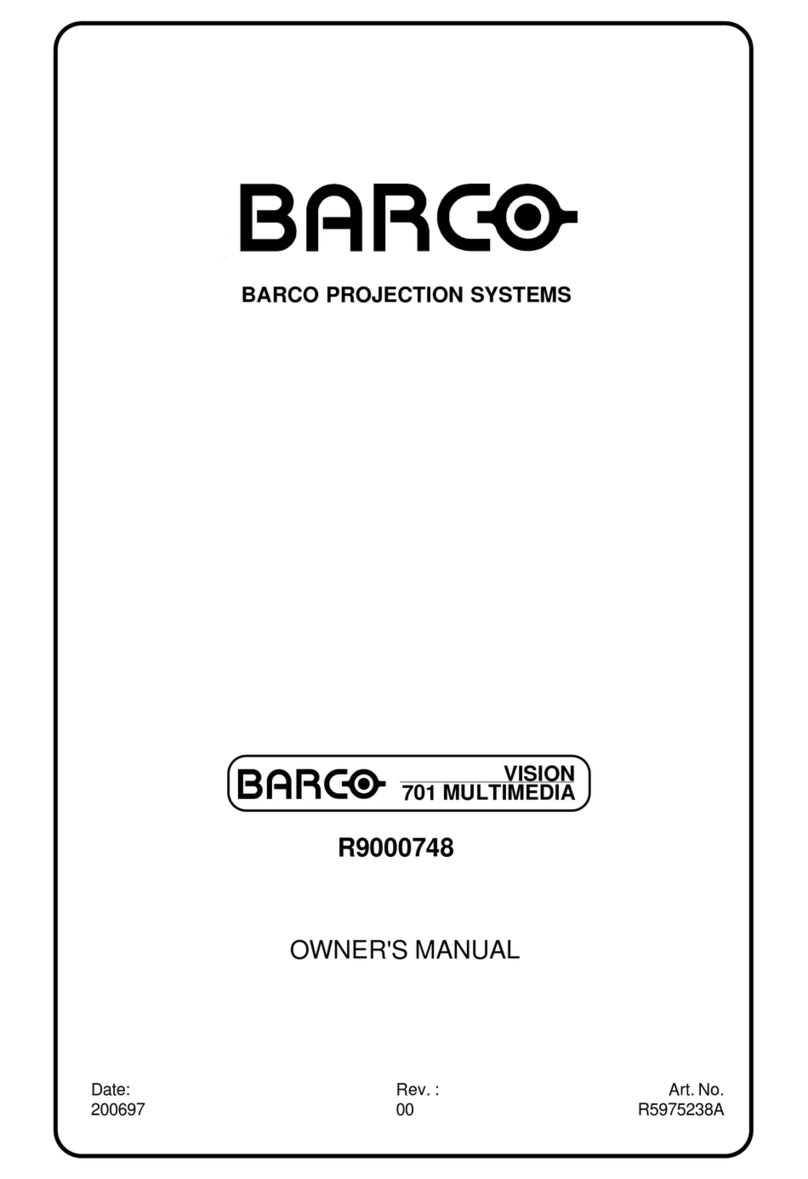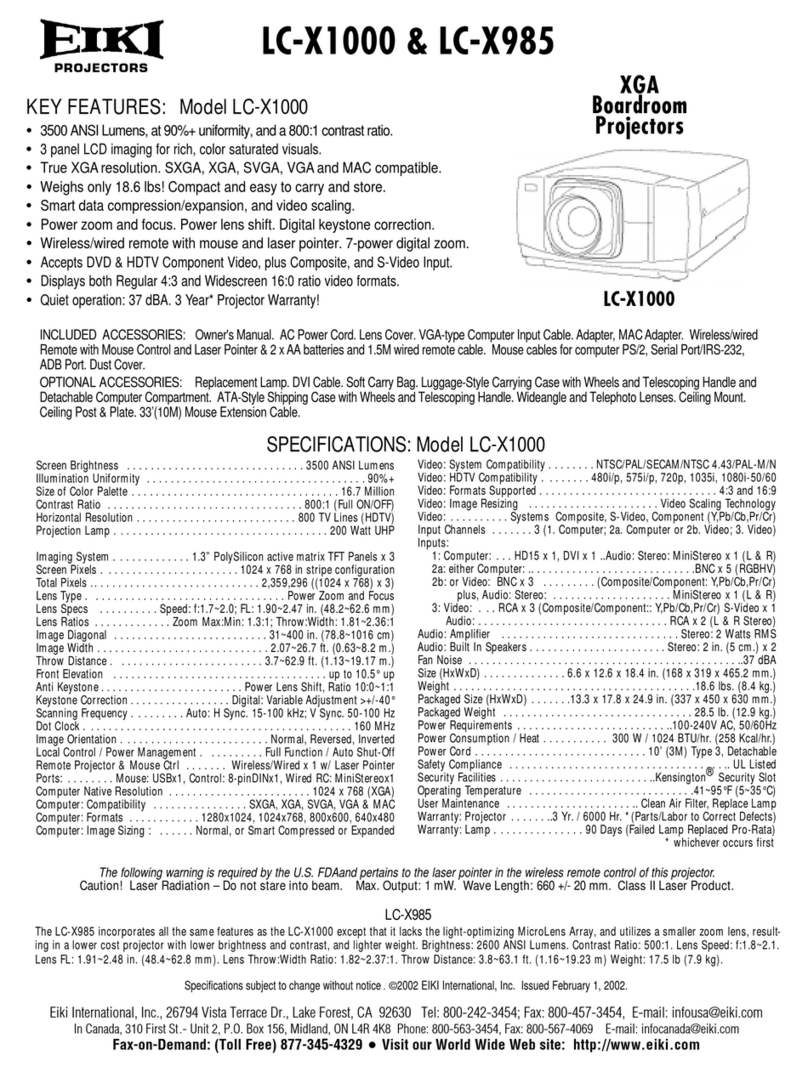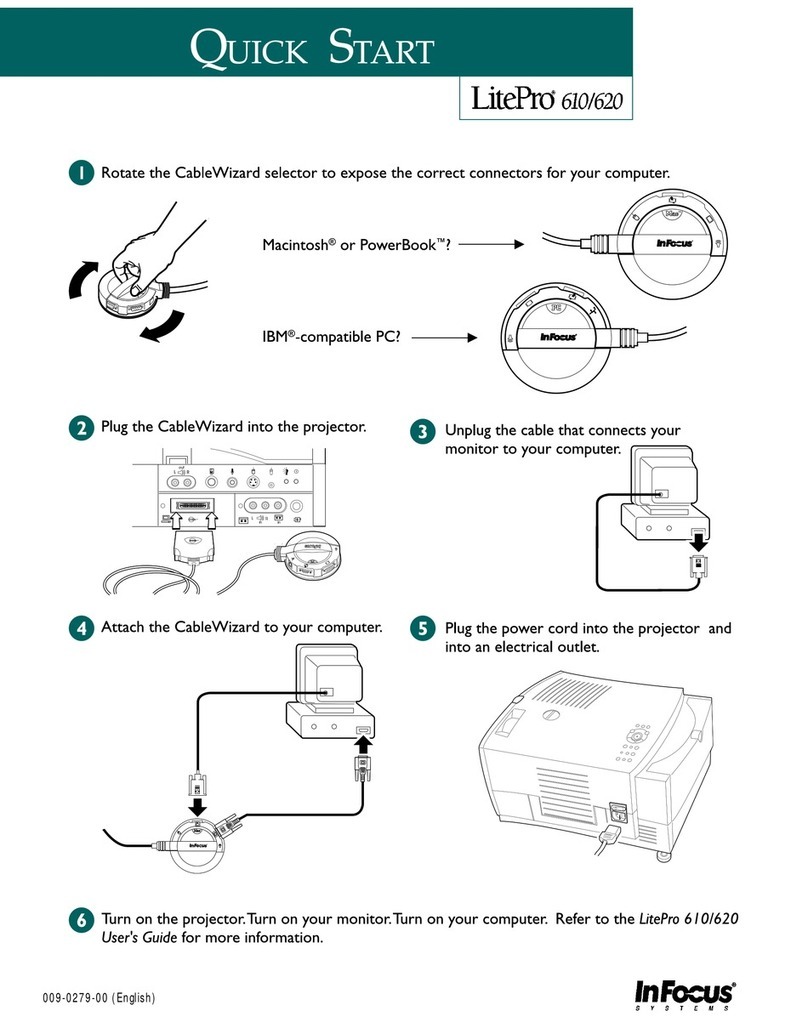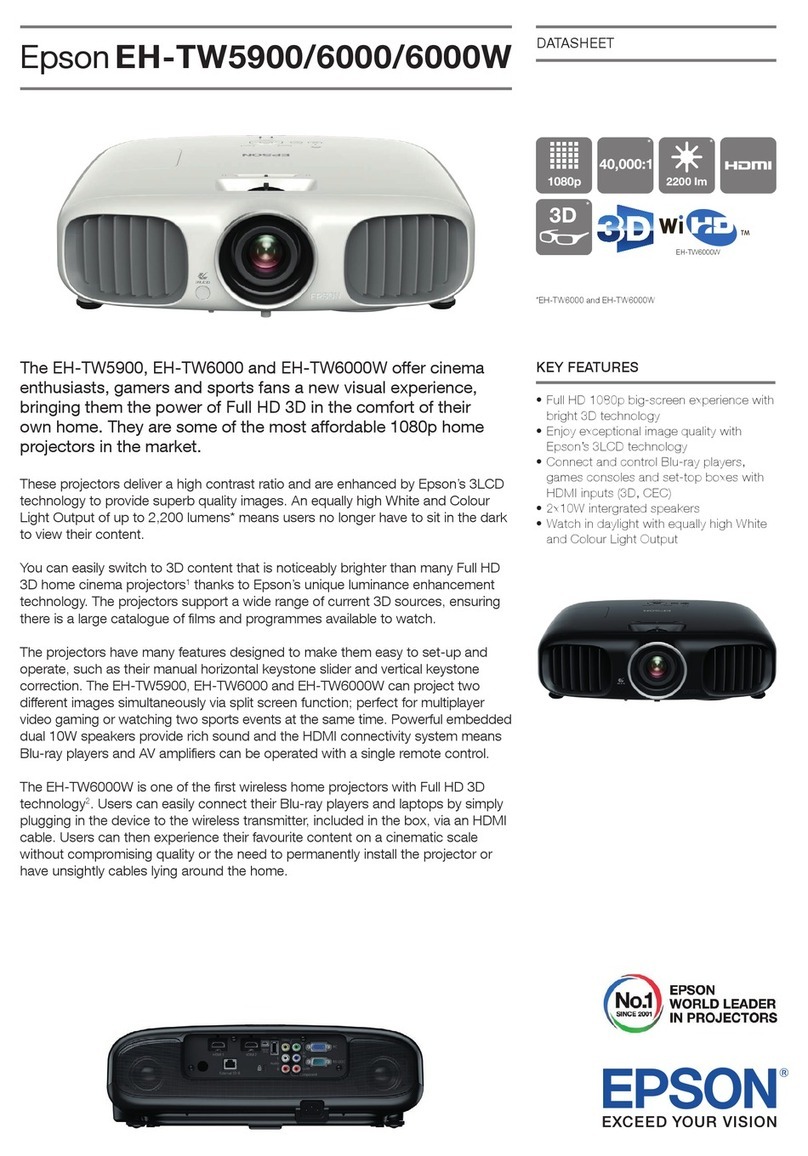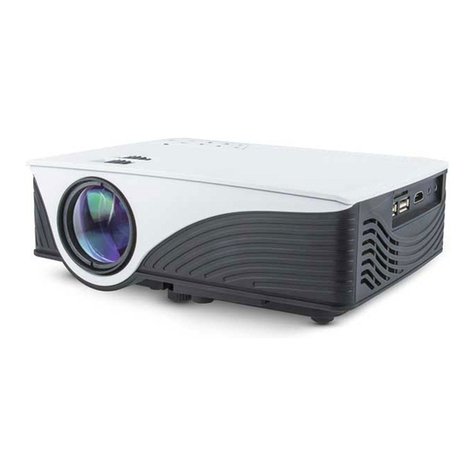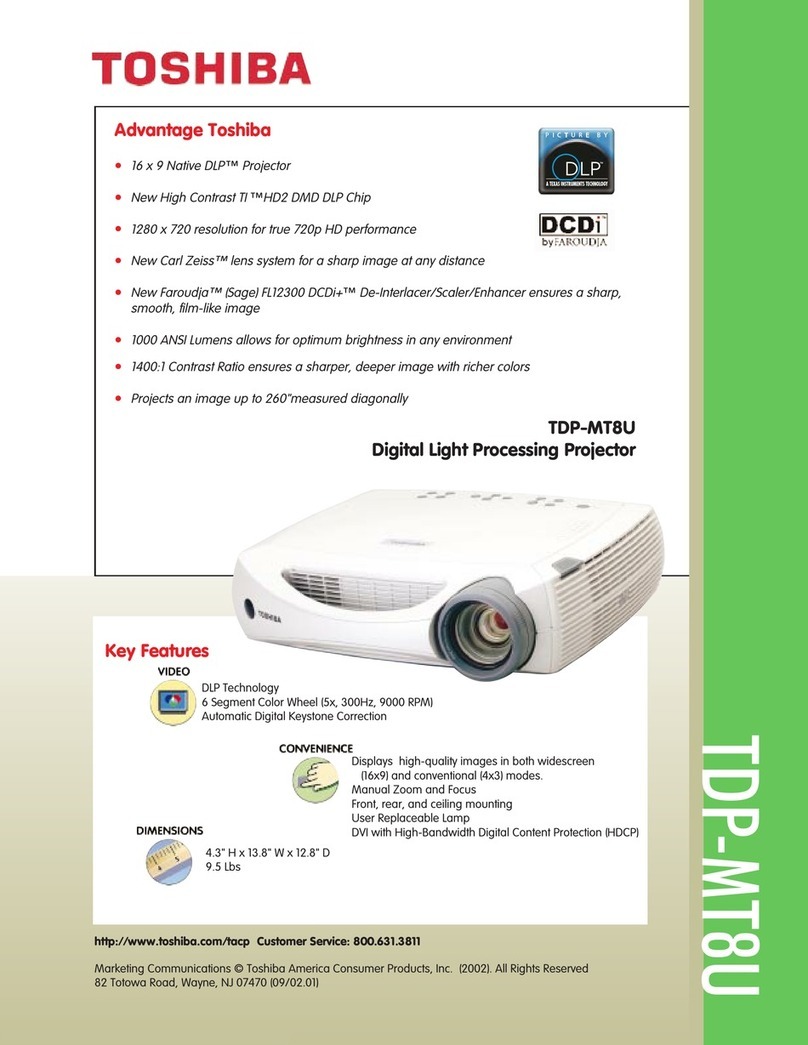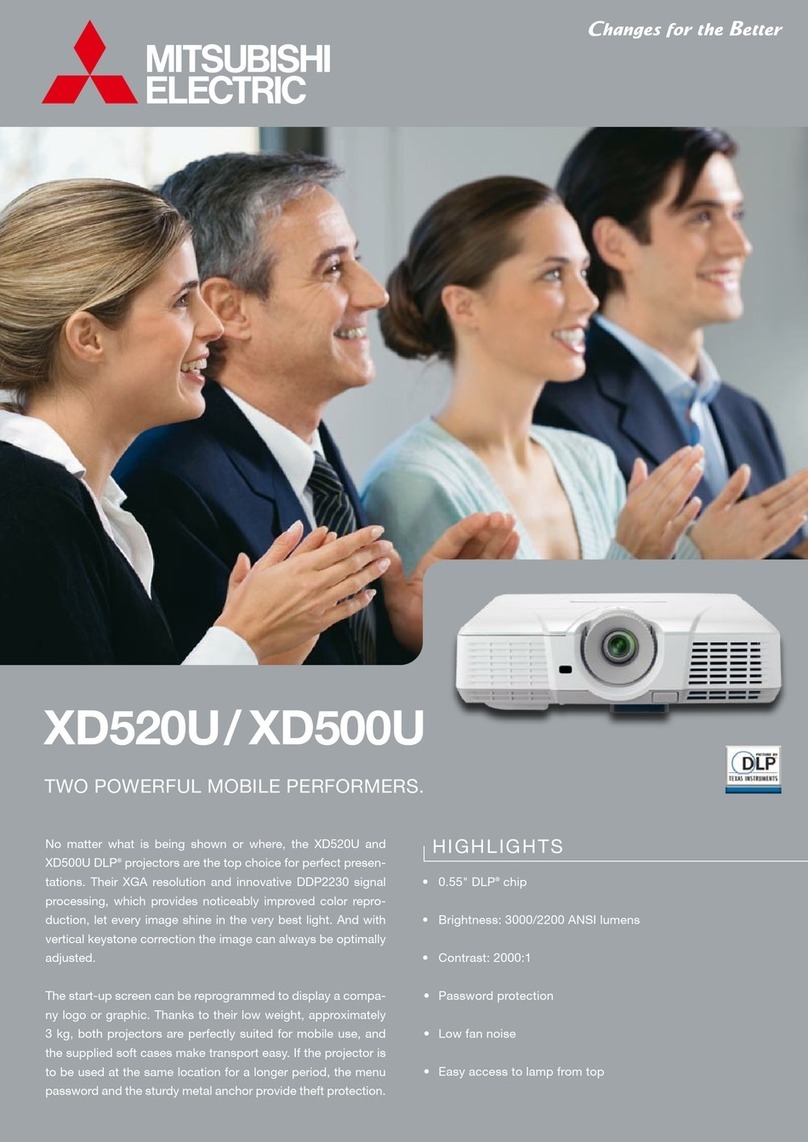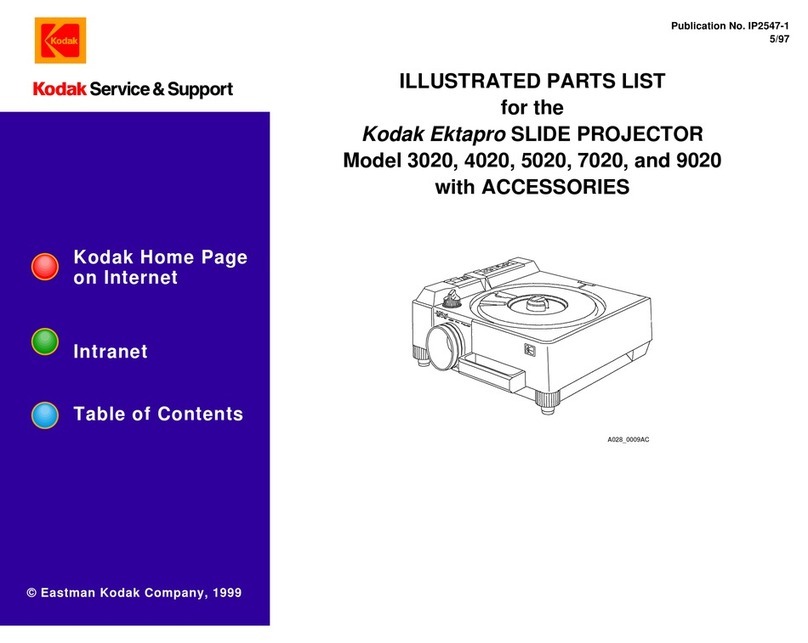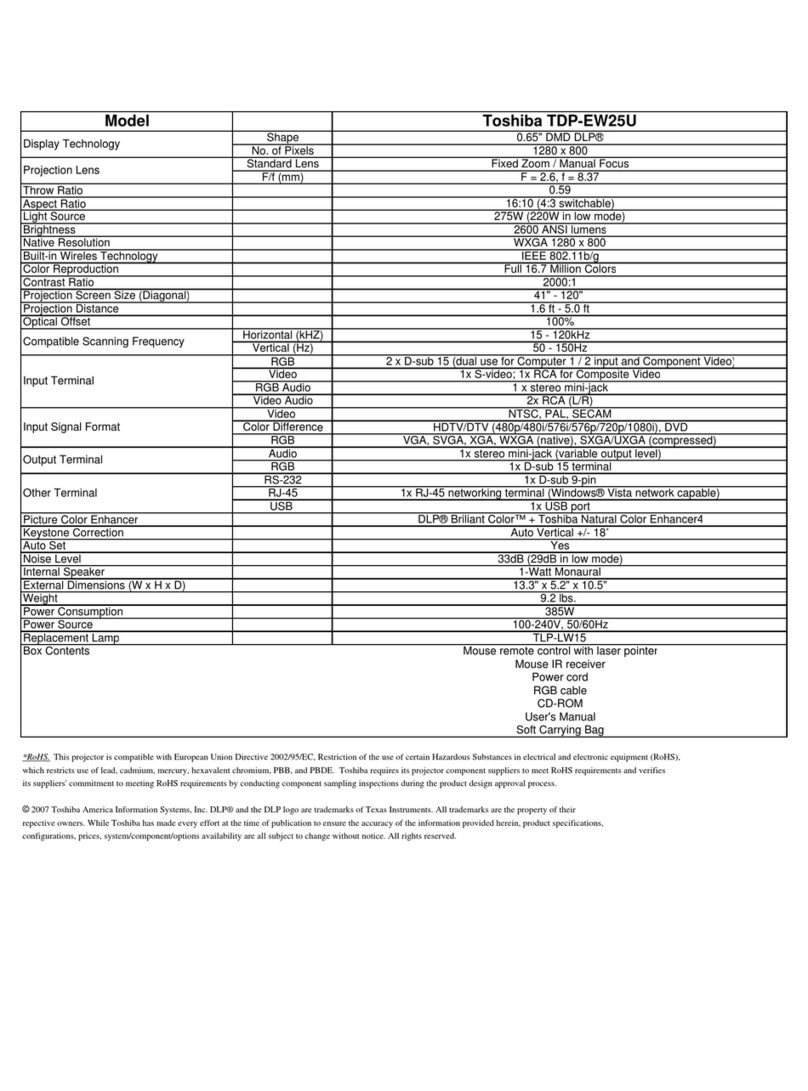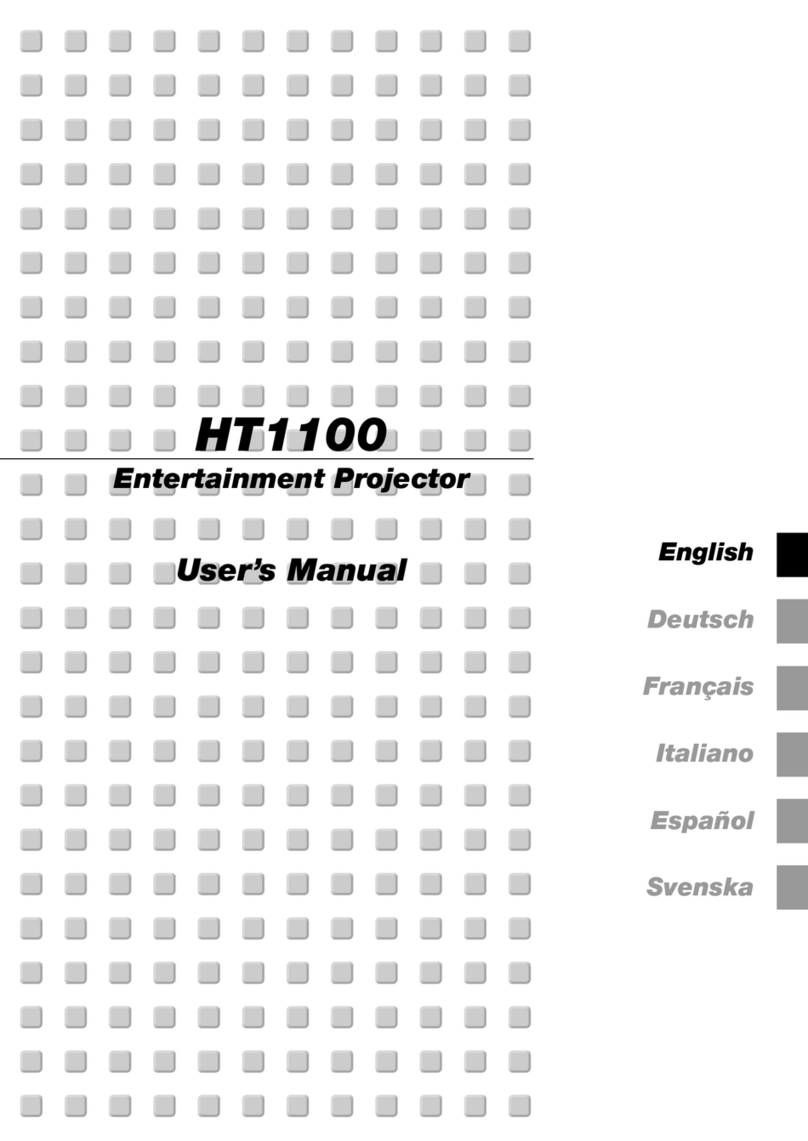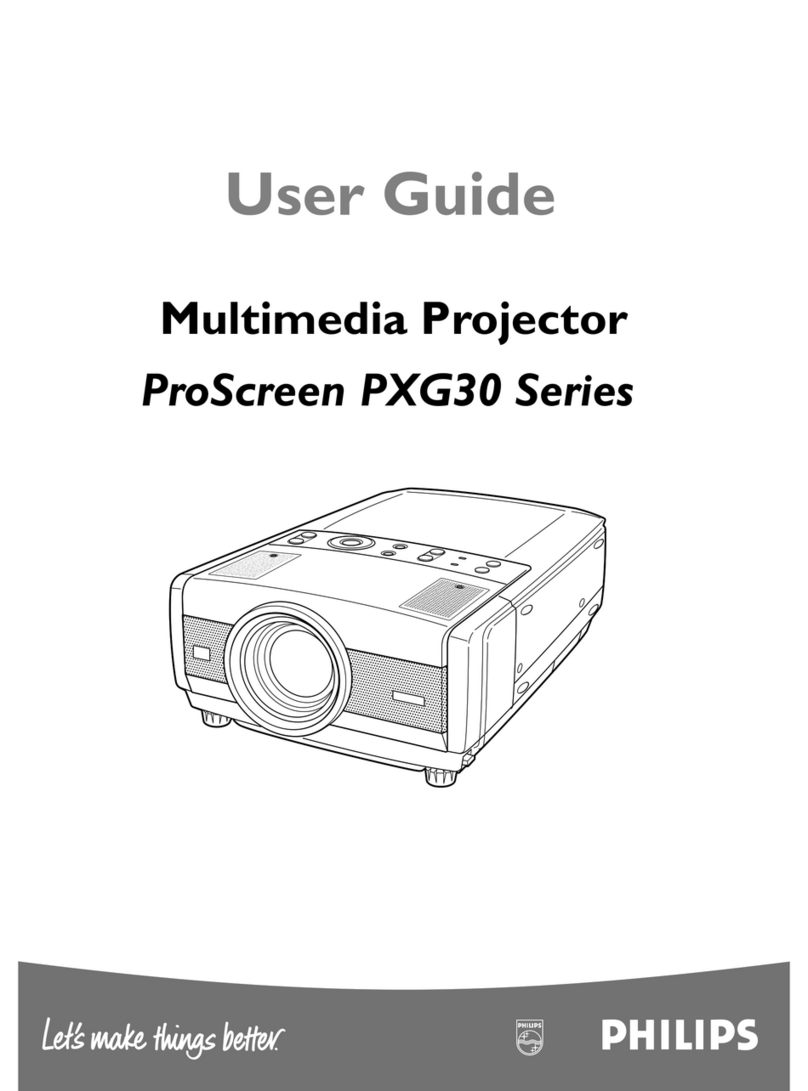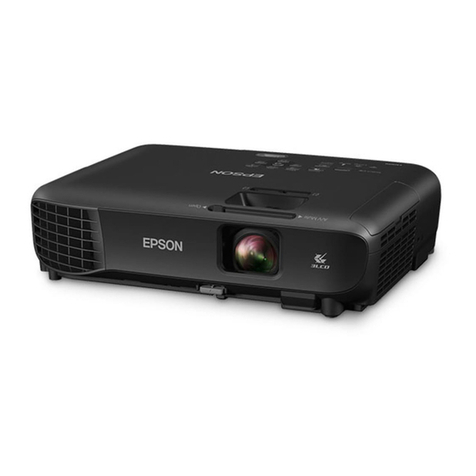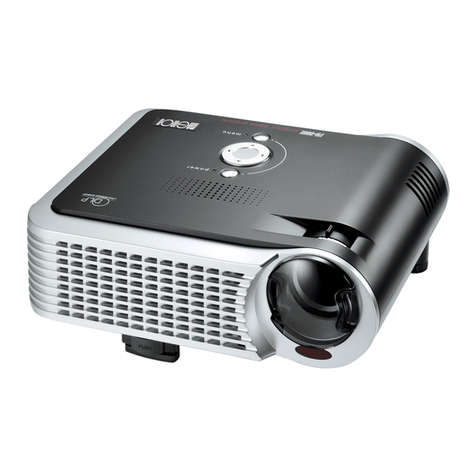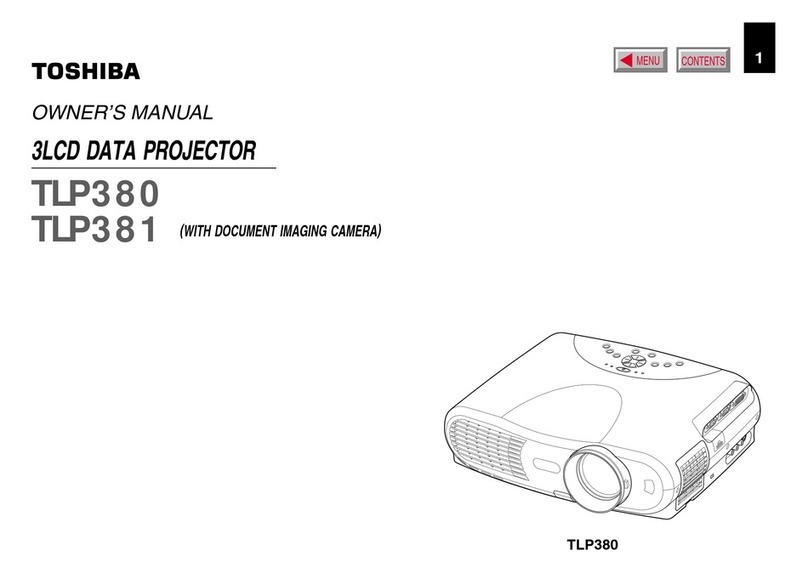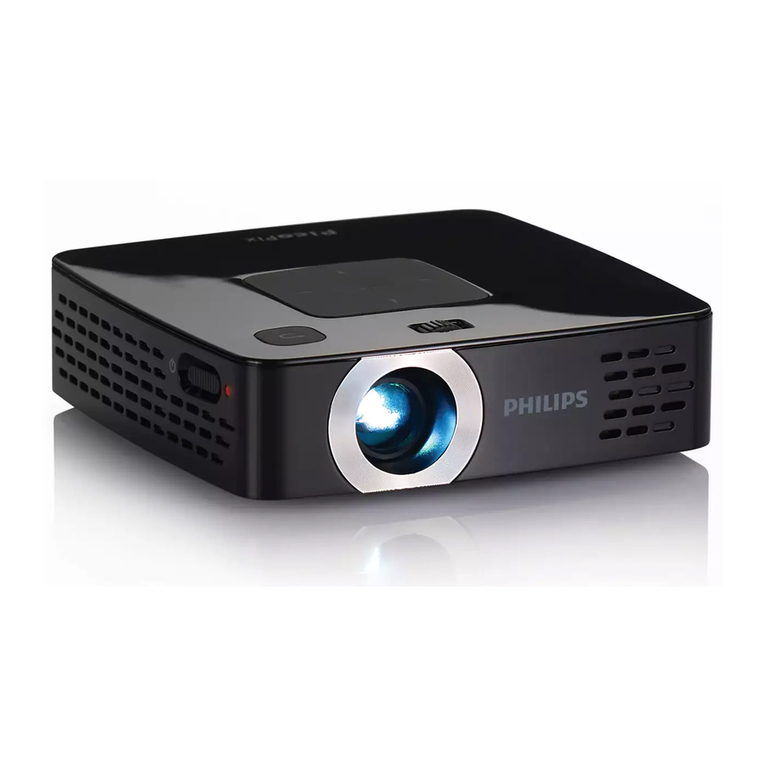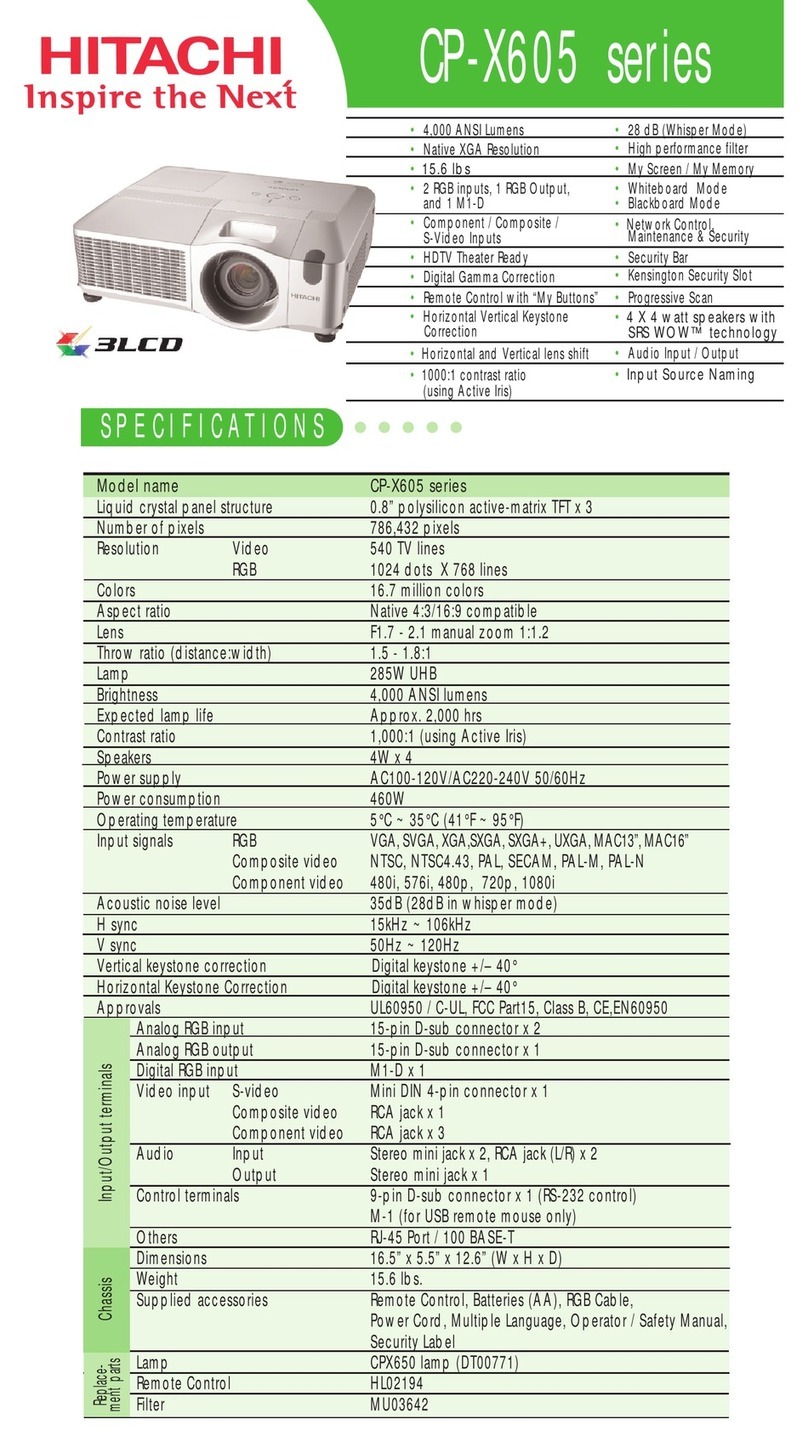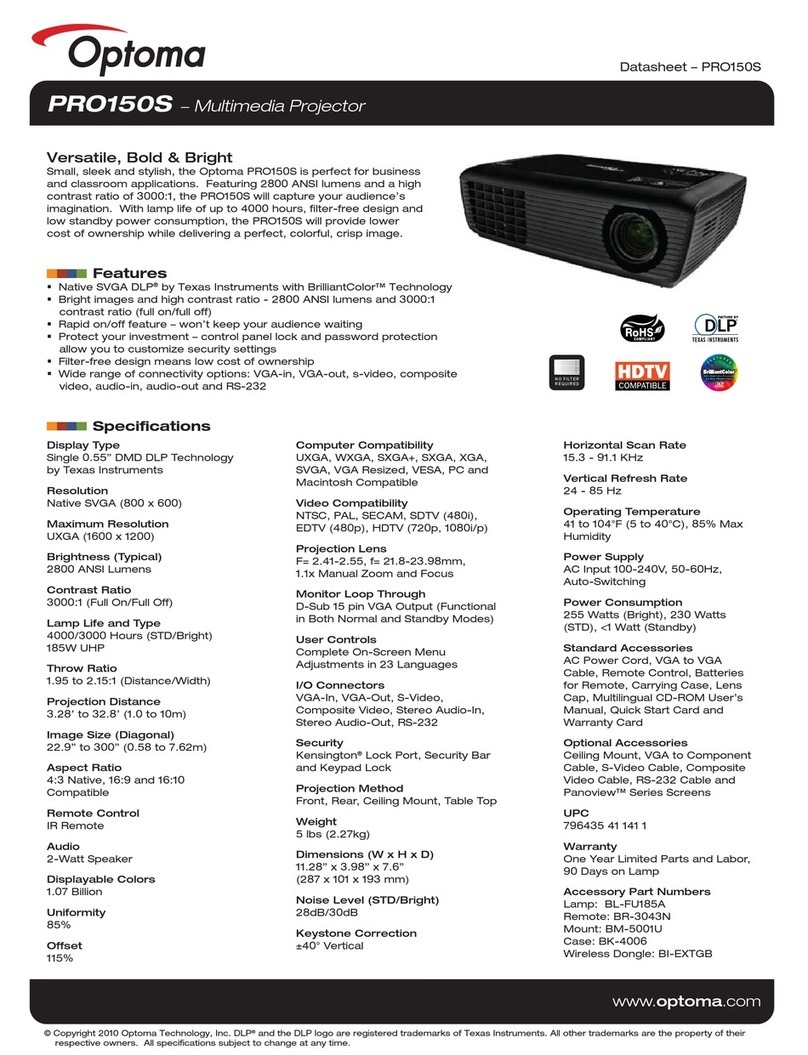
1. Safety
To prevent battery explosion
• Danger of explosion if battery is incorrectly installed.
• Replace only with the same or equivalent type recommended by the manufacturer.
• For disposal of used batteries, always consult federal, state, local and provincial hazardous waste disposal rules and regulations
to ensure proper disposal.
To prevent personal injury
• To prevent injury and physical damage, always read this manual and all labels on the system before powering the projector or
adjusting the projector.
• Do not underestimate the weight of the projector. The projector without the top cooler weights ±106 kg (±233.7 pounds). To
prevent personal injury a hoisting tool should be used to lift the projector.
• To prevent injury, ensure that the lens, cooling system and all cover plates are correctly installed. See installation procedures.
• Warning: high intensity light beam. NEVER look into the lens ! High luminance could result in damage to the eye.
•Warning: extremely high brightness projector: This projector embeds extremely high brightness (radiance) lasers; this laser
light is processed through the projectors optical path. Native laser light is not accessible by the end user in any use case. The
light exiting the projection lens has been defused within the optical path, representing a larger source and lower radiance value
than native laser light. Nevertheless the projected light represents a significant risk for the human eye when exposed directly
within the beam. This risk is not specific related to the characteristics of laser light but solely to the high thermal induced energy
of the light source; which is equivalent with lamp based systems.
Thermal retinal eye injury is possible when exposed within the Hazard Distance. The Hazard Distance (HD) is defined from
the projection lens surface towards the position of the projected beam where the irradiance equals the maximum permissible
exposure as described in the chapter "High Brightness precautions: Hazard Distance (HD)", page 6 .
• Based on international requirements, no person in allowed to enter the projected beam within the zone between the projection
lens and the related Hazard Distance (HD). This shall be physically impossible by creating sufficient separation height or by
placing optional barriers. Within the restricted area operator training is considered sufficient. The applicable separation heights
are discussed in "High Brightness precautions: Hazard Distance (HD)", page 6 .
• The projector shall be installed in a restricted access room equipped with a key or security lock preventing untrained persons
entering the Risk Group 3 use zone.
• Switch off the projector before attempting to remove any of the projector’s covers.
• When required to remove all power from the projector (eg during service), always disconnect the power from the projector
mains terminals and UPS INLET connector. Use the disconnect device in the building installation to disconnect the power to
the projector mains terminals, and unplug the power cord at the UPS INLET connector if the UPS INLET is separately powered.
• Do not place this equipment on an unstable cart, stand, or table. The product may fall, causing serious damage to it and
possible injury to the user.
• Lenses, shields or screens shall be changed if they have become visibly damaged to such an extent that their effectiveness is
impaired. For example by cracks or deep scratches.
• The associated Safety responsible of the unit must evaluate the setup before the unit may be started.
• Never point or allow light to be directed on people or reflective objects within the HD zone.
• All operators shall have received adequate training and be aware of the potential hazards.
• Strictly minimize the number of people who have access to the unit. The unit may never be operated without permission of the
responsible for safety.
• Do not put your hand or any body part in front of the beam.
Do not clean the port window when the projector is switched on.
• For a stand alone cooler, position the tubes so that they will not be tripped over, pulled, or contact hot surfaces.
On servicing
• Do not attempt to service this product yourself, as opening or removing covers may expose you to dangerous voltage potentials
and risk of electric shock.
• Refer all servicing to qualified service personnel.
• Attempts to alter the factory-set internal controls or to change other control settings not specially discussed in this manual can
lead to permanent damage to the projector and cancellation of the warranty.
• Remove all power from the projector and refer servicing to qualified service technicians under the following conditions:
- When the power cord or plug is damaged or frayed.
- If liquid has been spilled into the equipment.
- If the product has been exposed to rain or water.
- If the product does not operate normally when the operating instructions are followed. Adjust only those controls that are
covered by the operating instructions since improper adjustment of the other controls may result in damage and will often
require extensive work by a qualified technician to restore the product to normal operation.
- If the product has been dropped or the cabinet has been damaged.
- If the product exhibits a distinct change in performance, indicating a need for service.
• Replacement parts: When replacement parts are required, be sure the service technician has used original Barco replacement
parts or authorized replacement parts which have the same characteristics as the Barco original part. Unauthorized substitu-
tions may result in degraded performance and reliability, fire, electric shock or other hazards. Unauthorized substitutions may
void warranty.
4R5906714 DP2K CLP SERIES 09/05/2016
